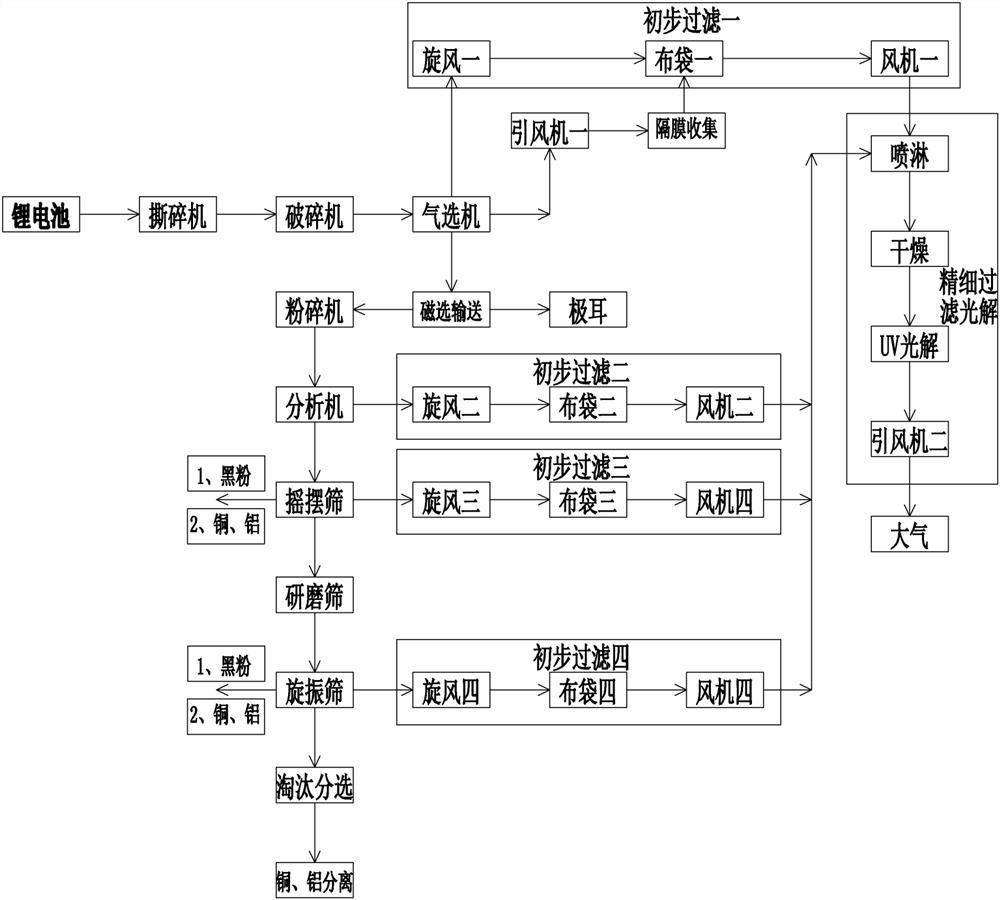Lithium battery recovery process
A lithium battery and process technology, applied in the field of lithium battery recycling technology, can solve the problems of branch combustion pollution, the efficiency of component recycling and reuse is not reflected, and achieve thorough material classification, fast material distribution efficiency, and good energy saving effect. Effect
- Summary
- Abstract
- Description
- Claims
- Application Information
AI Technical Summary
Problems solved by technology
Method used
Image
Examples
Embodiment Construction
[0036] The invention will now be further described in detail in conjunction with the accompanying drawings and embodiments. These drawings are all simplified schematic diagrams, and only illustrate the basic structure of the present invention in a schematic manner, so it only shows the configuration related to the invention.
[0037] It should be noted that if there is a directional indication (such as up, down, bottom, top, etc.) in the embodiment of the present invention, the directional indication is only used to explain the relative positional relationship between the components in a certain posture, Sports conditions, etc., if the specific posture changes, the directional indication will also change accordingly. The terms "first" and "second" are used for descriptive purposes only, and cannot be understood as indicating or implying relative importance or implicitly specifying the quantity of indicated technical features. Thus, a feature defined as "first" and "second" may...
PUM
 Login to View More
Login to View More Abstract
Description
Claims
Application Information
 Login to View More
Login to View More - R&D
- Intellectual Property
- Life Sciences
- Materials
- Tech Scout
- Unparalleled Data Quality
- Higher Quality Content
- 60% Fewer Hallucinations
Browse by: Latest US Patents, China's latest patents, Technical Efficacy Thesaurus, Application Domain, Technology Topic, Popular Technical Reports.
© 2025 PatSnap. All rights reserved.Legal|Privacy policy|Modern Slavery Act Transparency Statement|Sitemap|About US| Contact US: help@patsnap.com

